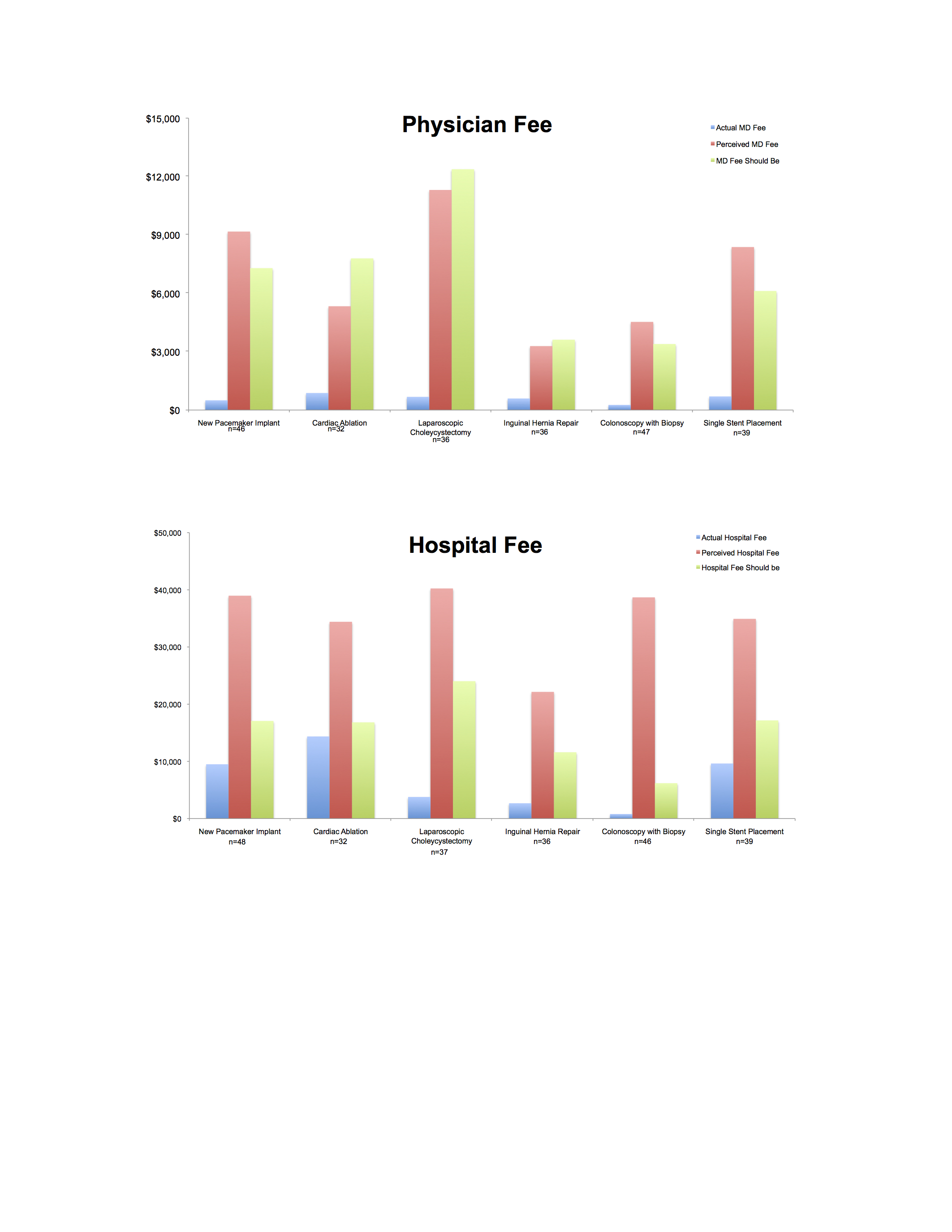Background: By 2022 health care spending is expected to climb to 19.9% of the US GDP and is forecasted to continue rising with no end in sight[1]. The patient (or consumer) is completely detached from the reimbursement system and thus unaware of the distribution of health care dollars. The purpose of this study is to measure the gap between what patients and physicians think physicians and hospitals are paid and what they actually are paid. This gap may have significant public policy implications.
Methods: This is an investigator initiated IRB approved, multi-center, survey study. Patients were selected using convenience sampling and physicians were identified through the San Diego County Medical Society. Patients and physicians were asked to record what they though the hospital and physician were paid for a particular procedure. They were then asked what they should have been paid and the results summarized. Statistical analyses were done with excel and SPSS for non-parametric data. The numbers used for the actual cost and physician fees are based on 2015 Medicare rates for Southern California[2].
Results: There were a total of 250 respondents, of which 106 had a history of the procedure they evaluated. The perceived vs. actual reimbursement for physician and hospital fees are seen in the following figures.
32% of patients thought the physician payment should be higher (response to how much the MD payment should be > perceived MD payment). 27% of patients thought the fee should stay where it was, and 41% of patients thought the fee should be less.
Conclusions: Looking at the awareness gap for each procedure, it is clear that neither patients nor physicians know remotely the actual cost of medical procedures and the amount paid to physicians. Most interesting is what patients thought the costs should be, specifically what they thought the physicians should be paid per procedure. Although 41% of patients thought the physician fee should be less, what they perceived to be a fair payment is still significantly higher than the true rate. This suggests that the general public needs to be educated on this topic before they can be relied on to make informed decisions about supporting political trends to reduce physician fees.
References:
- “National Health Expenditure Projections 2012 – 2022”, Center for Medicare and Medicaid Services.
- “Physician Fee Schedule Look Up Tool.” Center for Medicare and Medicaid Services. Web. 10 Apr. 2015.

